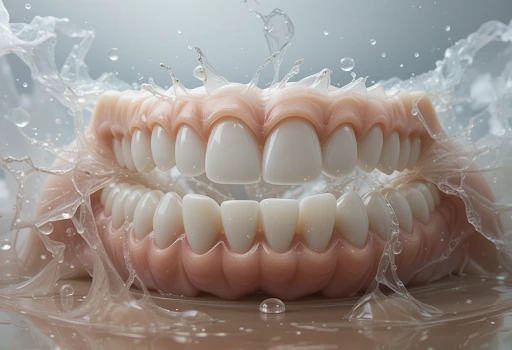Dental Bridge Cost – How Much Does a Dental Bridge Really Cost?
Dental Bridge Cost – How Much Does a Dental Bridge Really Cost?
Dental bridges can restore missing teeth and enhance oral health, function, and aesthetics while improving oral health, but they can be costly.
Understanding what factors affect cost is essential to creating a budget for this treatment. Affecting factors include number of teeth being replaced, material used and geographic location.
Urban vs. Rural
The average cost of dental bridges depends heavily on your geographic location and material choice; dentists in urban areas usually charge higher rates due to overhead expenses and competition for dental work. All-porcelain bridges tend to cost more than porcelain-fused-to-metal ones; the number of missing teeth you require replacing as well as any preparatory procedures required, such as managing gum disease or performing root canal treatment on supporting teeth can also add a considerable expense to this treatment option.
Experience and reputation are also factors in dental bridge costs; high-recognized prosthodontists may charge higher prices as their services are in high demand; thankfully, many clinics offer financing plans to make dental work more affordable.
Long-term benefits of replacing missing teeth with bridges are considerable and should be seriously considered when considering their purchase. They will improve your smile, chewing and speaking functions, prevent remaining teeth from shifting and distribute bite forces more evenly reducing stress on other healthy teeth. With proper maintenance a bridge should last 15 years while helping prevent complications or health problems such as jawbone loss or osteoporosis from emerging later.
US vs. Other Countries
Dental bridges offer an economical solution to replacing missing teeth, restoring both function and appearance to any smile. Costs depend on which type of bridge and material is selected; an experienced dental professional can help patients understand their specific needs before providing an estimate of total costs.
Dental insurance may cover some or all of the bridge costs, reducing out-of-pocket expenses. Furthermore, certain clinics offer membership plans which offer 10-20% discounts off treatments including bridges. Furthermore, online booking platforms like Bookimed allow patients to find and book discounted procedures from reputable clinics worldwide.
The cost of dental bridges varies by city, state and country due to disparate healthcare systems, economic circumstances and availability of qualified dentists. As a result, dental tourism has seen an upsurge, with patients traveling abroad for treatment at significantly reduced prices.
Costs associated with dental bridge restoration vary significantly based on the materials chosen, with porcelain and ceramic bridges typically costing more than metal or porcelain-fused-to-metal alternatives. Furthermore, more bridge components often translate to increased expenses; and certain bridge types require more complex treatments which may increase expenses further still. Due to these variables’ potential price variations dental bridge cost is crucial for patients to evaluate their individual needs carefully and select an established clinic as treatment providers.
Materials
After losing one or more teeth, choosing quality materials for a dental bridge is of critical importance for its long-term effectiveness and appearance. Many factors come into play when choosing between materials for this restoration; such as strength, durability, biocompatibility and aesthetics.
Base metal alloys are popular choices for dental bridges due to their strength, durability and cost-efficiency. They’re especially well-suited to use at the back of the mouth where aesthetics are less of a priority and they can withstand considerable chewing force – however their unique appearance might turn off some people.
“Urbanscope explores alternative materials such as porcelain, zirconia, and porcelain-fused-to-metal, which provide more natural-looking results. However, they tend to be more costly and difficult to repair than base metal alloys. Composite resin may also be an appealing choice due to its versatility and aesthetic qualities but tends to wear down faster.”
The cost of replacing missing teeth varies based on both their number and type. Traditional, cantilever, Maryland and implant-supported bridges tend to be more costly than single tooth replacement options, while prepping procedures like bone grafting or gum treatment may increase its cost further.
Payment Options
Dental bridges can be an economical and accessible solution to missing teeth dental bridge cost with numerous payment plans to make the procedure more feasible. Before considering dental bridges as a treatment solution, however, prospective patients should meet with their dentist to discuss their individual needs and any cost-cutting measures available – ultimately the long-term advantages far outweigh initial expenses in terms of improved oral health and function.
Costs associated with dental bridges depend on many variables, including material choice and case complexity. Zirconia and porcelain tend to be more costly options than metal alloys; additional treatments such as bone grafting or gum treatment could further drive costs up. Furthermore, follow-up visits are necessary in order to make adjustments or address any issues.
Geographic location can have an effect on fees as well. dental bridge cost Practices in urban areas tend to have higher operating costs and thus higher prices than rural or suburban practices. Furthermore, experience of the dentist often dictates their fees; more experienced practitioners usually charge higher fees.
Most dental insurance plans cover dental bridges; dental bridge cost best to check with your provider on specifics of coverage and be mindful that bridges may fall under restorative rather than cosmetic dentistry categories and therefore could incur deductibles and maximum annual limits.
Read also:Dental Bridge Cost – Factors That Affect the Cost of a Dental Bridge

